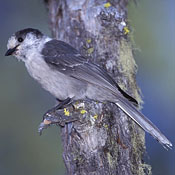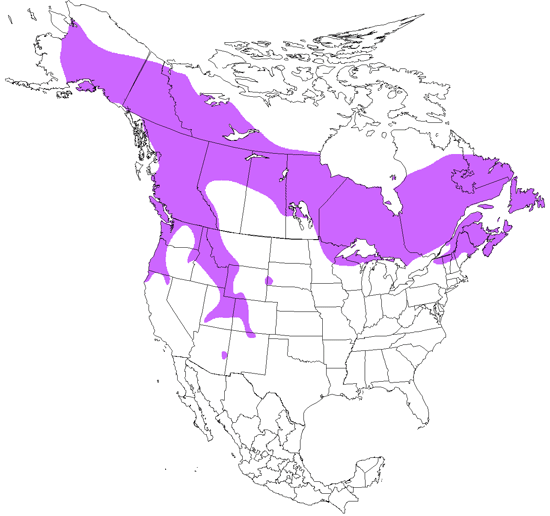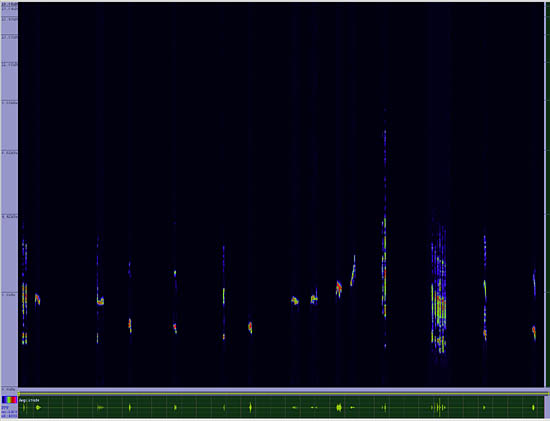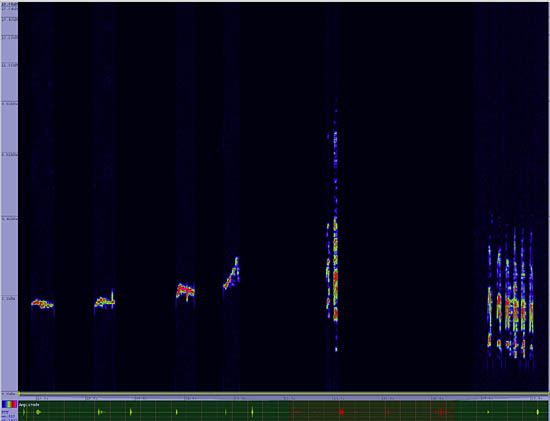Gray Jay
Perisoreus canadensis

Perching

Length: 12 in. (29 cm )
Often a bold and fearless resident of picnic tables and human camping areas in coniferous forest and mountains. The Gray Jay eats insects, fruit, and dead animals. It often caches mouths-full of food in branches and needles of trees for use in leaner times. The nest is large and woven from sticks, bark, moss and mammal hair and well insulated from the early spring cold temperatures. It is placed on a horizontal branch near the trunk In especially hard winters, Gray Jays move down to lower altitudes.
The four-digit banding code is GRAJ.
Bibliographic details:
- Article: Gray Jay
- Author(s): Dr. Biology
- Publisher: Arizona State University School of Life Sciences Ask A Biologist
- Site name: ASU - Ask A Biologist
- Date published: 13 Jul, 2017
- Date accessed: 18 October, 2025
- Link: https://askabiologist.asu.edu/activities/bird/gray-jay
APA Style
Dr. Biology. (Thu, 07/13/2017 - 15:36). Gray Jay. ASU - Ask A Biologist. Retrieved from https://askabiologist.asu.edu/activities/bird/gray-jay
Chicago Manual of Style
Dr. Biology. "Gray Jay". ASU - Ask A Biologist. 13 Jul 2017. https://askabiologist.asu.edu/activities/bird/gray-jay
MLA 2017 Style
Dr. Biology. "Gray Jay". ASU - Ask A Biologist. 13 Jul 2017. ASU - Ask A Biologist, Web. https://askabiologist.asu.edu/activities/bird/gray-jay
Be Part of
Ask A Biologist
By volunteering, or simply sending us feedback on the site. Scientists, teachers, writers, illustrators, and translators are all important to the program. If you are interested in helping with the website we have a Volunteers page to get the process started.







